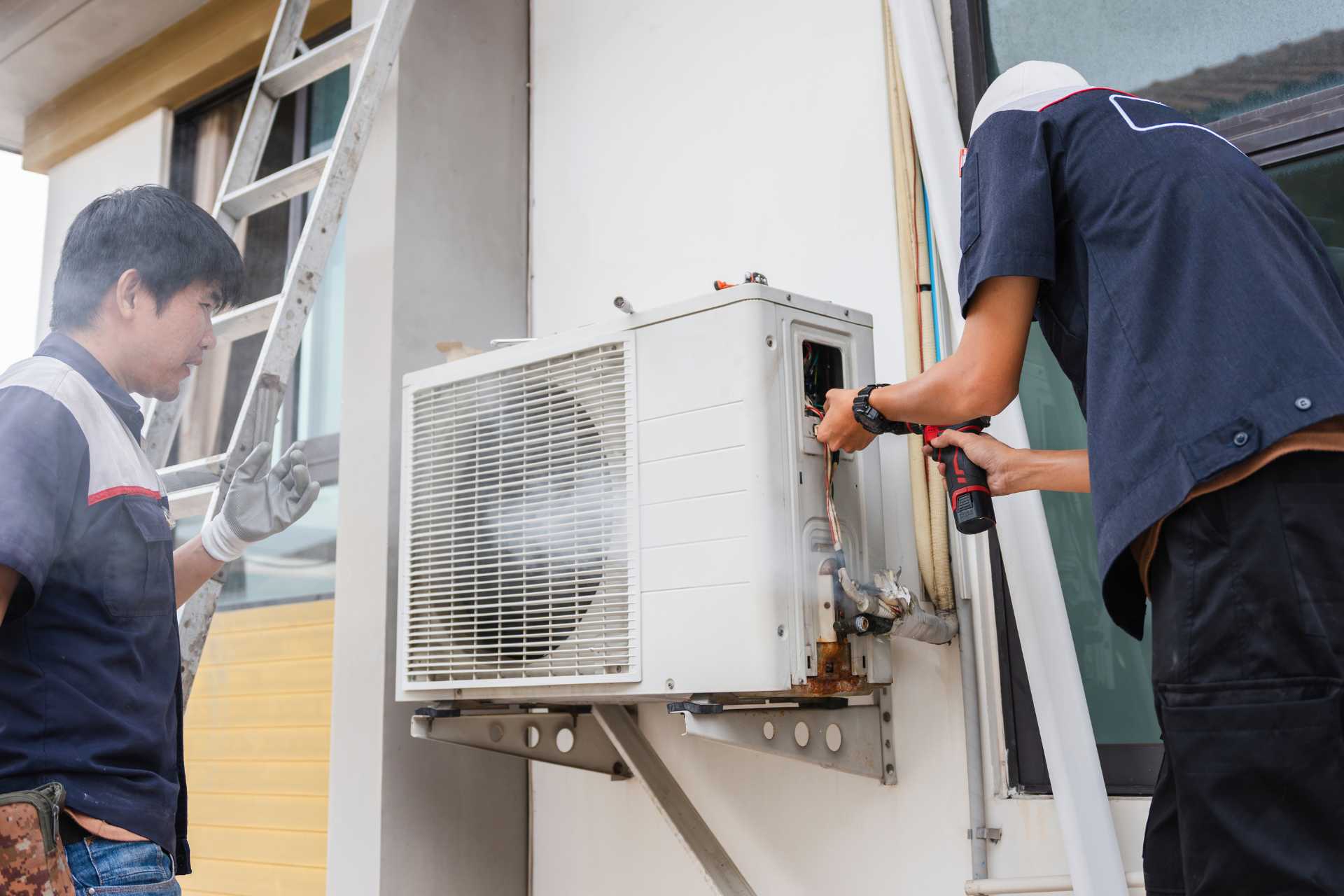The Most Common Winter HVAC Breakdowns (and How to Prevent Them)

When temperatures drop and harsh winter weather settles in, heating systems are forced to operate under sustained, heavy loads. This intense demand is precisely when pre-existing issues such as clogged filters, worn electrical components, and restricted airflow become critical failures. These internal problems frequently surface alongside other cold-season concerns, including unexpected furnace repair needs or excessive heat loss that may require an eventual window replacement. Together, these compounding factors create a perfect storm for serious mid-winter HVAC failures. This analysis helps readers understand the most common winter HVAC breakdowns, explains why they surface during intense cold snaps, and provides the practical steps necessary to prevent heating emergencies.
The Stressors: Why Breakdowns Peak in Cold Snaps
Heating systems are fundamentally stressed by two main factors during the winter: sustained operation and rapid changes in ambient temperature. Unlike milder operation during the shoulder seasons, extreme cold weather requires the system to run continuously for hours. This relentless cycling accelerates wear and tear on mechanical components, including the blower motor, relays, and electrical contacts. This constant operation quickly consumes the remaining lifespan of aged parts, meaning a component that was functioning adequately while switching from cooling mode to heating mode in the fall will fail completely under the non-stop demand of January.
Furthermore, a sudden, rapid drop in ambient temperature forces the system to run at maximum capacity for extended periods. This is necessary to maintain the thermostat setting. This high-stress demand immediately exposes underlying inefficiencies. For example, a slightly dirty flame sensor or a weak starting capacitor might function during moderate use. However, these components will fail when the system is challenged to perform perfectly for hours on end. The single most common point of failure is airflow starvation. Clogged air filters severely restrict the air movement needed for combustion and heat exchange. This restriction forces the system to struggle. This drastically increases fuel use and accelerates component stress, leading directly to major winter HVAC breakdowns.
Common Failures and Their Warning Signs
Ignition and Flame Sensor Issues
A frequent culprit behind emergency calls is the failure of the furnace to sustain its flame, often due to an issue with the ignition system or the flame sensor. The flame sensor, a small metal rod, is a safety device designed to detect the presence of fire. If it is coated in dust, dirt, or moisture, it cannot confirm a successful ignition and automatically shuts the gas valve off to prevent explosion. This safety feature causes the furnace to “lock out.”
The warning sign for this specific failure is distinct: the furnace will repeatedly cycle, emitting a series of audible clicks and attempts to ignite, followed quickly by the system shutting down entirely without producing heat. While sometimes remedied by carefully cleaning the sensor, this persistent on-and-off cycling places intense strain on the ignitor and gas valve, indicating an immediate need for professional attention to prevent complete winter HVAC breakdowns.
Blower Motor and Capacitor Failure
The blower motor is the mechanical heart of the system. It is responsible for moving conditioned air throughout the home. Continuous, high-speed use during cold weather can lead to mechanical breakdown. The motor requires a capacitor, a small cylindrical component, which holds the charge necessary to initiate the motor’s spin.
When this capacitor degrades or fails entirely, the motor cannot start or runs sluggishly. This leads directly to reduced airflow and potential overheating. Audible warning signs of this mechanical stress include a high-pitched squealing sound. This often signals worn motor bearings. Another sign is the system attempting to turn on with a loud hum but failing to move air. Restricted airflow can quickly damage the heat exchanger, so any noise or failure to move air warrants immediate investigation. This type of failure contributes significantly to unexpected winter HVAC breakdowns.
Frozen Heat Pumps (External Coils)
Heat pumps operate by extracting heat from the outdoor air, even when temperatures are below freezing. This process naturally causes frost to build on the exterior coil. The heat pump is therefore engineered to enter a defrost mode to melt this ice periodically. If the defrost cycle fails, the unit’s external coil will become completely covered in ice. Failure can happen due to a faulty sensor, a reversing valve malfunction, or insufficient refrigerant. The primary warning sign is excessive, visible ice buildup that lasts for more than an hour or two. This is coupled with a sharp decline in heating performance indoors. An iced-over coil prevents the unit from extracting necessary heat from the air. This forces the auxiliary electric heat to carry the entire heating load. This drastically increases energy consumption and risks irreparable damage to the compressor.
Draft and Venting Problems
Modern high-efficiency furnaces utilize PVC intake and exhaust flues. These flues terminate outside the home. During heavy snowfall or severe icing events, these flues can become partially or completely blocked by snow or ice accumulation. This obstruction prevents the safe intake of fresh combustion air or the proper venting of exhaust gases. This immediately triggers a pressure or safety switch, shutting the system down.
Warning signs of a venting issue are critical. They include condensation building up rapidly on indoor windows or the distinct smell of gas or exhaust fumes near the furnace unit. Beyond the immediate loss of heat, the blockage of exhaust vents poses a severe safety hazard. This is due to the risk of carbon monoxide accumulation. Regular visual checks of exterior vents are essential to prevent this type of catastrophic winter HVAC breakdowns.
The Prevention Playbook: Simple, High-Impact Maintenance
The Filter Mandate
The simplest and most effective HVAC maintenance task before winter arrives is rigid adherence to the filter mandate. It is imperative to check and replace air filters every 30 to 90 days during the heavy heating season, with homes featuring pets or higher dust levels requiring monthly changes. A clean filter ensures optimal airflow, which is the single most critical factor in preventing overheating, protecting the sensitive blower motor, and maintaining the furnace’s maximum rated efficiency.
Restricted airflow from a clogged filter dramatically stresses the system’s ability to pull air across the heat exchanger, a condition that can lead to permanent damage and necessitate expensive winter HVAC breakdowns. Keeping filters clean stabilizes the system, allowing components to operate within their design parameters and extending the overall life of the unit.
Professional Tune-Up
Scheduling a detailed, annual inspection in the late fall is the most comprehensive preventative measure a homeowner can take. A licensed technician performs a multi-point check of critical components that are inaccessible to the average homeowner. This includes testing the gas pressure, cleaning the flame sensor and ignitor, lubricating the blower motor, and checking the integrity of all belts and electrical wiring.
This professional tune-up is an investment designed to prevent a small, latent failure—such as a failing capacitor or a loose wire—from escalating into a catastrophic, no-heat situation during the deepest cold. Finding and addressing these issues before the severe cold weather hits is always more cost-effective than an emergency weekend repair call.
Managing the Exterior Unit (Heat Pumps)
For homes utilizing heat pumps, proper management of the exterior unit is non-negotiable. Homeowners must actively ensure the unit is kept clear of accumulating snow, ice, and fallen debris throughout the season. The area around the unit must be kept clear to allow for proper airflow and drainage. The unit’s drain hole must remain open to allow defrost water to escape freely.
It is critically important to refrain from using sharp objects to attempt to chip ice off the fins, as this can easily puncture the refrigerant lines. If excessive ice builds up, homeowners should use only warm water to gently melt the accumulation. Maintaining the external unit’s cleanliness supports the efficient operation of the defrost cycle, thereby preventing unnecessary component strain.
Inspecting for Heat Loss
Connecting HVAC maintenance to the overall home envelope is key to long-term efficiency and reduced system strain. Inspecting weather stripping, sealing ductwork, and checking seals around windows and exterior doors for air leaks dramatically reduces the home’s overall heating load. This is especially true when considering how your home insulation affects the efficiency of your HVAC system.
Reducing the burden on the furnace means the system runs shorter cycles and experiences less overall wear and tear. A leaky home forces the furnace to compensate for lost heat, increasing run time and fuel consumption. Addressing envelope weaknesses, which may include considering window replacement in very old homes, is a proactive step that provides a permanent reduction in the risk of winter HVAC breakdowns.
Your System’s Winter Safety Net
Winter HVAC failures rarely happen suddenly—they develop quietly over months and only reveal themselves when the cold pushes the system to its limit. Addressing airflow issues, worn components, and exterior vulnerabilities before the first deep freeze ensures the entire system can withstand the heavy demand of cold snaps. By pairing routine maintenance with smart home envelope improvements, homeowners prevent the chain reaction that leads to mid-season breakdowns and costly emergency repairs. A well-prepared system delivers consistent heat, lower energy costs, and peace of mind throughout the harshest months of the year. Now is the time to schedule the tune-ups and inspections that keep your home warm and your HVAC system operating at peak performance all winter long.


